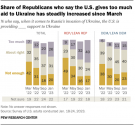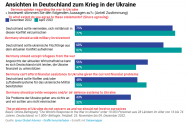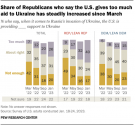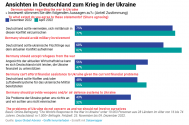Didn't see a lot of BTR-82a footages and BTR-80, some picture in convoy or on a train but rarely in action even if it's widely used. Maybe it used more at the rear ?
That's because Russian ground forces still use the vehicles largely in line with Soviet doctrine and the names of the vehicles are
military designations describing tactical role:
- BMP is boyevaya mashina pyekhoty lit. fighting invantry vehicle
- BMD is boyevaya mashina desanta lit. as above except "desant" is Russian for air or amphibious assault troops.
- BTR is bronirovaniy transporter lit. armored transporter
- MT-LB is mnogotseloviy tyagach - lekkiy bronirovaniy lit. multirole tractor - light armored
Therefore BTR-82A still fulfills the tactical role of an armored transporter based on the tactical manual for BTR-82A rather than an infantry fighting vehicle even though it is used by nominally the same "motor rifle" battalions as are MT-LBs which are not supposed to be armored transporters at all.
In Russian nomenclature "motor rifle" does not mean "mechanized". Motor rifle is a traditional formation name much like US Army has "infantry" divisions which are ABCTs and "cavalry" units some of which are ABCTs and some SBCTs.
"Motor rifle" is a general purpose formation with three battalions of infantry, a battalion of tanks and an artillery battalion with two squadrons of howitzers (2x 18) and one of rocket artillery (1x 12). Of those three infantry battalions two are are BMPs or MT-LBs and one is BTRs - depending on location and army and whether they're more likely to be used offensively or defensively.
"Tank" units are dedicated armored formations and have three (rarely two) tank battalions and one infantry battalion - always with BMPs i.e. "mechanized". They also typically have weaker artillery compared to motor rifle units - 2S3s instead of 2S19s and no Grads.
BTR has weaker armour compared to BMP, especially from the front and it doesn't handle terrain as well despite relatively low weight. It's a primitive vehicle. It also has completely impractical layout with drivers at the front and hatches for dismounts on both sides of the hull - which means that it's not a good idea to get it anywhere close to enemy fire. Unlike the BMP you can't turn it with strongest armour and smallest cross-section toward enemy fire while infantry dismounts safely in the back. At best you turn it sideways which exposes the entire troop compartment which is lightly armoured.
BTR-82A entered service in the 2010s as an interim measure before introduction of Bumerang which was a proper wheeled IFV. The idea was to have some wheeled unit with better firepower compared to 14,5mm which is the standard BTR-80 armament. The main issue was gaining range because armour is too thin and the vehicle simply can't close the distance in the same way that a 20-25t APC can. So the 30mm autocannon is incidental and BTR-equipped battalions are rear/screening units not traditional assault infantry so whenever you see them in action that's an exception from their main tactical role.
Damn so low in water... amphibious maybe but in calm water, need probably insane pump to get the water out just with a few waves.
Russian and Soviet nomenclature uses the designation "P" in the name which stands for "
plavyushchiy" (lit. swimming) for vehicles with proper amphibious capability. PTS is the "
plavyushchiy transporter stredniy" or medium amphibious transporter. PT-76 is "
plavyushchiy tank" or amphibious tank etc. It therefore would be better to describe vehicles like BTR, BMP or MT-LB as "floating" while restricting "amphibious" to vehicles with "P". In essence you can cross water obstacles by "fording" (tanks) by "floating" (BMP, MT-LB, 2S1) or by "swimming" (PTS, PT-76, BRDM, BTR).
By the way if you look at the height of MT-LB's hull you'll see that it doesn't really sit so low in the water - it's just very flat, long and low. In water it handles as well as other "floating" vehicles which means
you don't put it in water if there are waves. But fundamentally it's not a proper amphibious vehicle. It was only meant to cross smaller rivers while advancing in Germany and to be able to handle flooded terrain in general like in wild parts of Russia.
From practical use in WP armies we know that the amphibious capabilities of "floating" vehicles are not that useful. For example there's quite a lot of preparatory work that needs to be done before such vehicles can cross a water obstacle. PTS can fall into the water. If a BMP does that it will sink immediately. It has to slowly drive into is from low angle banks and climb out at a similarly low bank. The current can't be too strong because it is propelled by tracks so it doesn't have good mobility in water and can easily overshoot the intended exit point. Etc etc. In general you only do it if you have no other options and only with extreme care.
Sounds like bollocks to me. Most likely the T-62s would be put into service as the equivalent of support fire weapons for mechanized infantry brigades.
There are no "mechanized infantry brigades" in the Russian army. There are motor rifle
battalions that focus on "mechanized" tactics and battalions that focus on "motorized" tactics.
There are no "support fire weapons" in Russian doctrine either. Tanks perform fire support mission and Russia uses
tanks and every tank battalion uses the same tactics regardless of whether it's part of a tank regiment or a motor rifle brigade, whether it is an old T-72B or modern T-90M. There really isn't a tactical framework that Russians can employ to put T-62s to use differently than other tanks simply because to use a "fire support vehicle" you need infantry capable of offensive maneuver with greater aggression and firepower which is something that Russia doesn't have. That's because they have a lot of tanks that they use for that purpose. "Fire support vehicles" are for units that can't afford tanks - either due to cost or logistics. Fire support vehicle is "limited use tank substitute".
T-62s will be used as tanks just with more caution due to weaker armour. But if they're equipped with thermals then they will be capable of more aggressive tactics using distance than say T-72B without thermals which in theory can get closer to the enemy because they're better protected.
Between a T-62 and an AMX-10rc, I would take T-62. Leopard 1 is more or less equal.
Leopard 1 is significantly better than T-62. It has much better mobility, reliability and ergonomics and those things play a much bigger role on the battlefield compared to slightly better RHA armour or slightly larger gun. Both tanks are insufficiently protected for contemporary battlefield but I'd much rather be sitting in a Leo1 than a T-62 but only if I have necessary training for maneuver warfare. If I'm just a mobilized reservist/conscript with basic training who was put inside a tank it doesn't really matter because I'm useless anyway.
AMX-10RC is a very good wheeled recce/fire support vehicle that will fit with some of the wheeled units of the Air Assault forces. It will be very good in built up terrain provided that crews will receive proper training and will use it as intended. It's a specialized tool and needs to be used as such. If I could choose between AMX-10RC and T-62 and was able to also choose tactics I would choose AMX-10RC.
Just a spare tought, but the 300k mobilised would need tanks as well, means maybe the mothballed ones are to expand the tank fleet, not to replace it ?
Russia invaded with 50% of TOE. All of its ground force units were severely under-strength. VDV was the only formation with full complement going into battle. This made it impossible to execute basic tactics and was the reason for low combat effectiveness and high losses. Because the authorities refused to mobilize initial casualties were filled by volunteers and other contract personnel which only prolonged the losses.
When mobilization was started in September it meant that first re-trained reservists arrived at the front in November. By which time 300k was necessary to simply match the required number of personnel. The expansion only happened with the continued mobilization in December but even then it takes time.
There's no additional army coming in. The mobilization only turned the Russian army into what it was theoretically supposed to be in terms of numbers
in February 2022. Additional personnel will also fill up posts in units from all over Russia which were moved to Ukraine. Technically if you look at how Russian doctrine is supposed to handle such a full-scale conflict the military is still under-strength. The mobilization is insufficient but Moscow doesn't want to risk further instability.




